The Power of Us: Climate change has disproportionately impacted these vulnerable US communities, experts say
ABC News is taking a look at solutions for issues related to climate change and the environment with the series, "The Power of Us: People, The Climate, and Our Future."
Researchers have been warning for years that the world's most vulnerable populations will suffer the most dire consequences of climate change.
But the disproportionate impacts of climate change on the poorest communities – the members of which contribute the least amount of greenhouse gas emissions – are already affecting pockets of the U.S. as extreme weather events are exacerbated by warming global temperatures, events in recent years have shown.
In the U.S., immigrant communities are often on the frontline of increasingly more severe extreme weather events, including wildfire smoke, extreme heat, and flooding, Ahmed Gaya, senior strategist for climate and social justice for the Climate Justice Collaborative, a nonprofit that focuses on providing support to climate-displaced people, told ABC News.
A 2021 report by the U.S. Environmental Protection Agency (EPA) found that the most underserved communities are least able to prepare for, and recover from, extreme heat waves, poor air quality, flooding and other climate-related events.
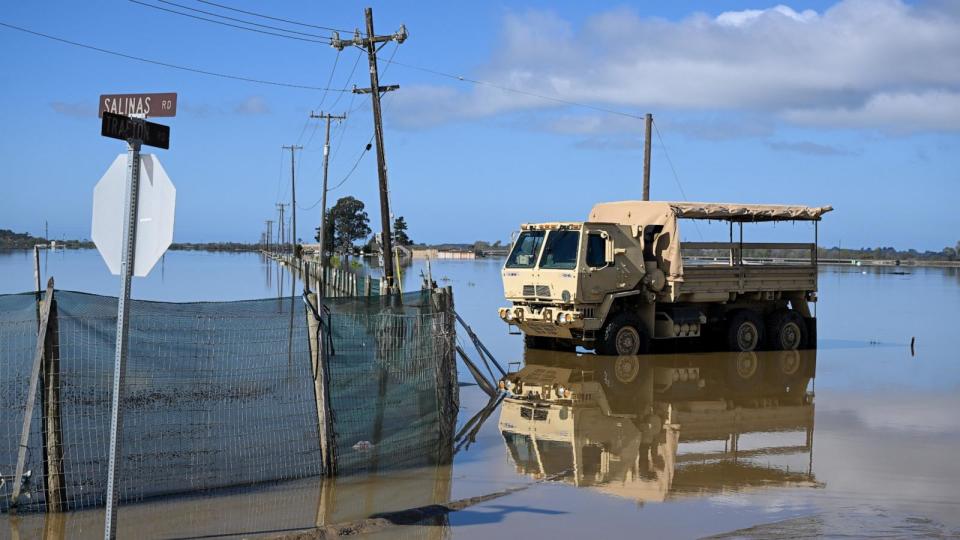
Ethnic minority communities are particularly vulnerable to the greatest impacts of climate change under a 2-degree Celsius warming scenario, the "worst-case scenario" outlined in the Paris Agreement, according to the EPA. Black individuals are projected to face higher impacts of climate change, with 40% more likely to currently live in areas with the highest projected increases in deaths related to extreme temperatures, the report found.
Hispanic people have high participation in weather-exposed industries, such as construction and agriculture, which are especially vulnerable to the effects of extreme temperatures, according to the EPA.
These communities typically lack affordable, quality housing, and so are more vulnerable to the damage that comes with extreme weather events, Gaya said.
At every stage of the weather event recovery process, residents in vulnerable communities face challenges, from the lack of critical infrastructure to the distribution of funds during recovery, Phyllis Cuttino, president and CEO of The Climate Reality Project, a non-profit for climate change education and advocacy, told ABC News.
"This has been a pattern across the United States for a long time, and as climate change increases, we see this problem exacerbated," Gaya said.
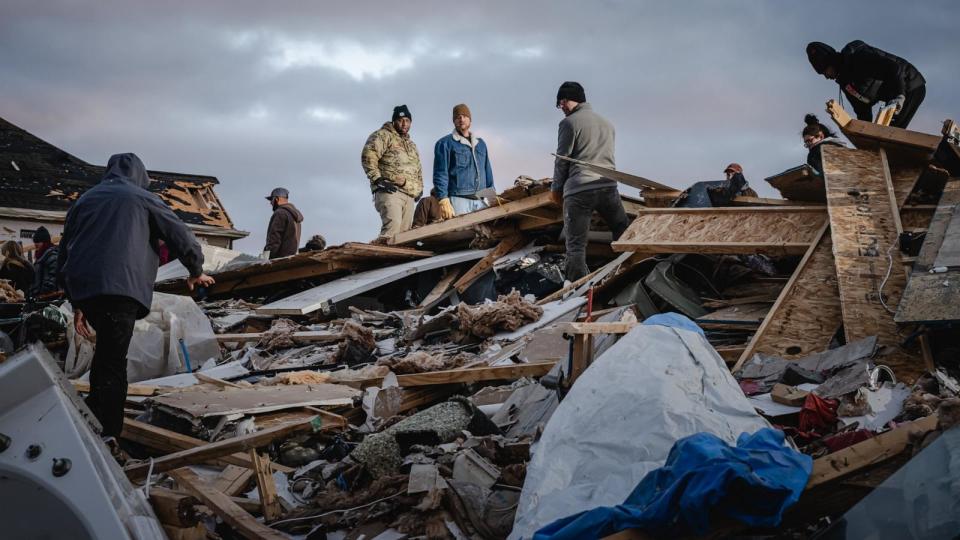
ABC News is highlighting three communities in the U.S. that have been adversely affected by climate change in recent years.
Each of these communities – although varying in geography, demographics and types of weather-related impacts – face similar challenges, including a disconnect between residents and government, a lack of resources, and resulting emotional trauma, climate activists and community leaders told ABC News.
These communities have typically seen little infrastructure investment due to that lack of resources, making the recovery process slower and more drastic than experienced by wealthier communities, Cuttino said.
Language barriers were also a major problem for each of these communities, which are typically largely made up of immigrant populations, especially when the residents speak indigenous languages. They don't know where to get aid, how to fill out the requisite forms, and how to engage in the recovery process – all of which often causes them to miss out on benefits to which they are entitled, Gaya said.
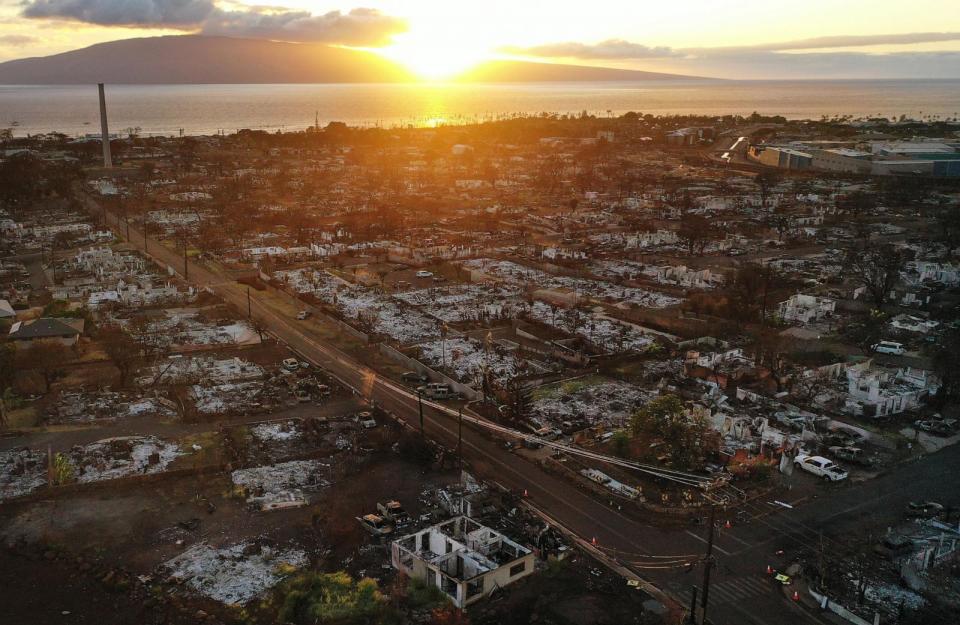
In addition, many are excluded from federal recovery assistance because of their immigration status, despite being homeowners and business owners. This significantly increases their chances of permanent displacement – a blow to immigrants who left their original home in search of stability, the experts said.
Many nonprofits are working with local governments to help these communities build resiliency, and skills such as social strength and cultural competence.
"When everyone in the community is prepared, understands and is able to prepare for and respond to a disaster, the whole community does better," Gaya said.
Pajaro, California: Major flooding destroyed much of the town
Flooding of the Pajaro River in the Central Coast region of California – which lies roughly between Los Angeles and San Francisco – has been a regular occurrence for decades. That has necessitated the construction of a new levee that can better hold back rising water levels, replacing the current levee, which was built in 1948, Glenn Church, who represents Pajaro on the Monterey County Board of Supervisors, told ABC News.
But in March 2023, as round after round of atmospheric rivers dumped a massive amount of precipitation on the California coast, a devastating levee break inundated much of the small town of Pajaro, destroying hundreds of structures, and leaving a community filled with immigrant and indigenous residents from Central and South America displaced and out of work, Vlad Carrasco, deputy director of external affairs for the Coalition for Humane Immigrant Rights of Los Angeles, told ABC News.
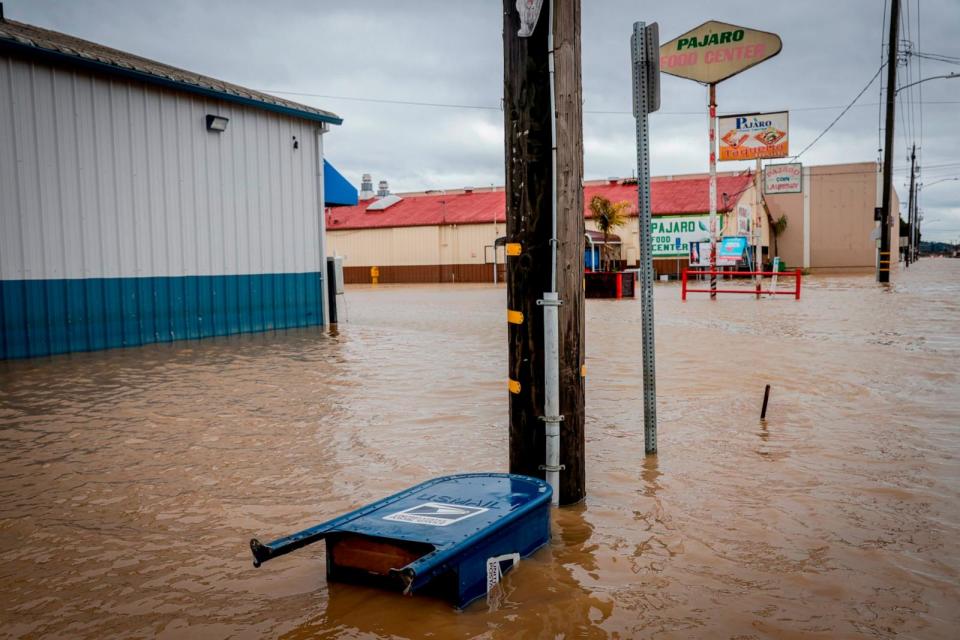
The extreme weather caused an estimated $600 million in damage to the agriculture industry and $30 million in damages to businesses and commercial structures. In the aftermath, residents were warned of health risks from mold and soil contamination, Kelsey Scanlon, Monterey County's director of emergency management, told reporters during a press conference in March – nearly a year after the flooding occurred.
Many of Pajaro's 3,000 residents are undocumented farmworkers, some of whom lived in the region when a similar flood event occurred in 1995, according to the Climate Justice Collaborative. Other residents hold largely low-wage, working-class positions including gardening, and working in fast-food, healthcare and homecare, Church said.
Because the unincorporated city is on the border of two counties – Santa Cruz County to the north and Monterey County to the south – Pajaro residents often refer to themselves as "The Forgotten Ones," Carrasco said.
"This community, for decades, has seen no investment in infrastructure and development," Carrasco said, adding that this has left its infrastructure dilapidated and unable to withstand the threats from extreme weather.
MORE: California's Pajaro River breaches overnight, residents urged to evacuate
In December 2023, the Monterey County Board of Supervisors approved a plan for $20 million in storm relief for Pajaro, $10 million of which will go directly to residents. Additionally, California Gov. Gavin Newsom has since created the Storm Assistance for Immigrants Program, a $95 million program aimed to provide disaster relief for undocumented residents who do not quality for aid from the Federal Emergency Management Agency (FEMA).
In addition, plans are in place to build a new $600 million levee that can withstand a so-called 100-year flood, Church said.
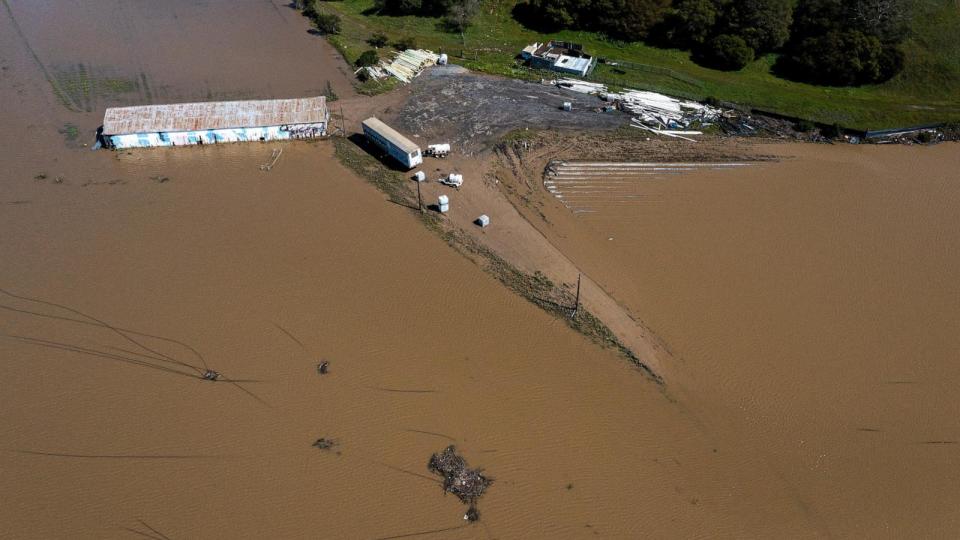
Advocates are calling for further recovery funds and investment in resilience to protect the immigrant and indigenous communities from future flooding and climate impacts.
"Climate change is a threat multiplier," Carrasco said. "So folks that are already vulnerable and experiencing the challenges that exist in the day-to-day life for low-income immigrant workers are now having to face additional challenges."
Nashville, Tennessee: A "Latinx" community displaced by a tornado outbreak
On Dec. 9, 2023, a tornado outbreak tore through the Southern U.S., killing six people in Tennessee.
Two of the victims were a mother and her 2-year-old son from Guatemala – part of a "Latinx" community within the Madison neighborhood of Nashville that was severely impacted by the storm, Cesar Bautista, campaign manager for the Tennessee Immigrant and Refugee Rights Coalition, told ABC News.
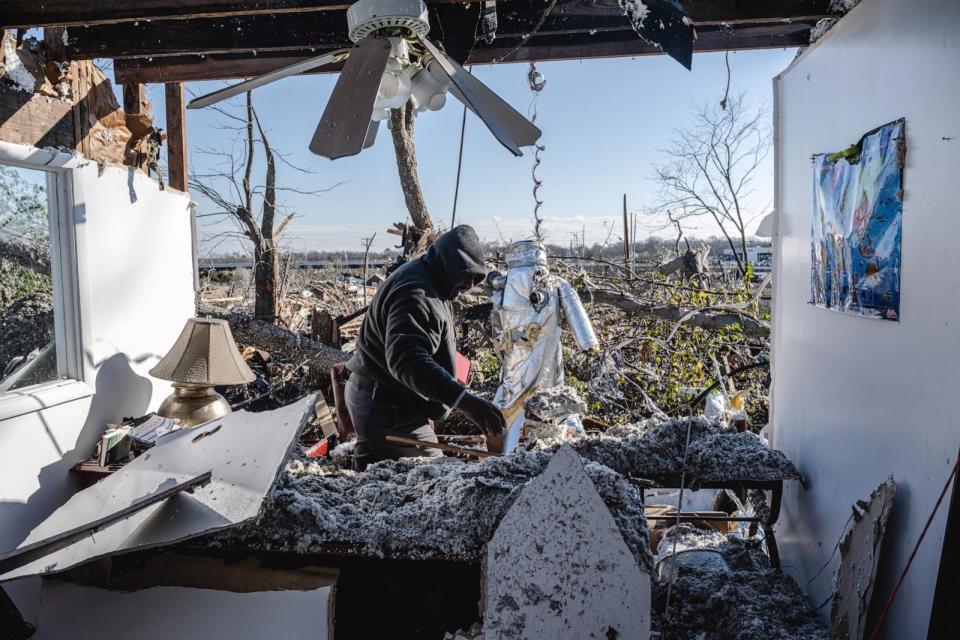
An EF-2 tornado that touched down in Nashville that afternoon was the likely culprit, destroying nearly 300 residential structures, including the mobile home park where much of the local "Latinx" community lives, Bautista said. The mother was found within the debris of their trailer still holding onto her child, he added.
Residents reported that they did not receive any information that the tornado was heading directly toward the mobile park because there were no messages sent in their language, Gaya and Bautista said.
MORE: President Biden 'praying' for families after 6 die in severe weather in Tennessee
For those who did receive alerts, they were not able to read them because the alerts were not in their indigenous language, Bautista said. With the downed power lines and inoperable Wi-Fi as a result of the storm, it was almost impossible for the members of that community to gather information or assistance, he said.
Nashville utilizes sirens as a universal warning system for all residents when an emergency is happening, a spokesperson for Nashville Mayor Freddie O'Connell told ABC News via email. Going forward, emergency efforts will include "on-the-ground translators, offering information resources in multiple languages, and working with partners in the community to reach residents," according to the mayor's office.
"In the aftermath of several recent natural disasters, Mayor O'Connell identified a key need: equipping Nashvillians to be good second responders for their community," the spokesperson further said. "Since taking office in September, he has worked with community partners to ensure language services is a critical part of any disaster response."
The language barriers also adversely affected the recovery from extreme weather events, because residents who went to shelters could not fill out forms or give the aid workers the proper information to apply for assistance, Bautista said.
Since the tornado outbreak, Davidson County, which includes Nashville, has provided support to 361 households totaling $810,692.07 under its Individuals and Households Program; 95 households totaling $460,385.94 under its Housing Assistance Program; housing repairs to 22 homes, totaling $132,650.70; and rental assistance to 84 renters totaling $277,688.00, according the mayor's office.
Many who live in the Nashville "Latinx" community are domestic or construction workers, Bautista said. Consequently, the recovery process, which included ensuring that these residents could continue to work despite being displaced, was a "slow process," he said.
Even so, some families were forced to leave the county permanently, he said. Others found temporary housing with friends and family and were able to return.
Things are beginning to return to normal for the growing and thriving community, Bautista said, but noted that residents, many of whom still live with the emotional trauma of leaving their original home, are likely bracing themselves for the next natural disaster.
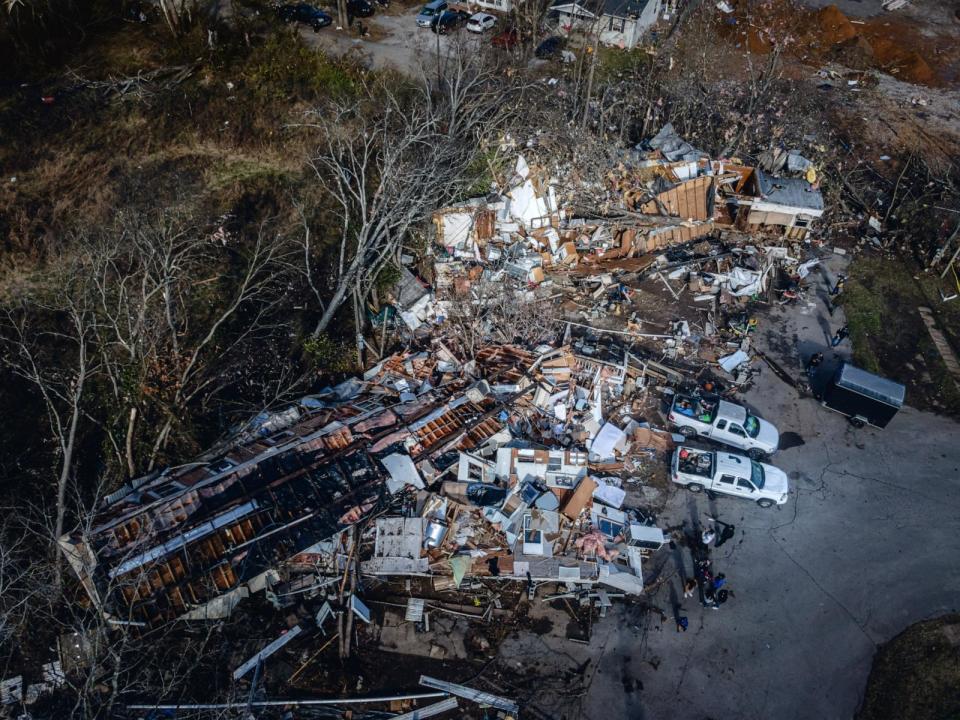
The geographic location of the so-called Tornado Alley – which historically has meant the Midwest, North Central and South Central U.S., where tornadoes are the most prevalent – is likely shifting due to climate change, with the mid-South now at 25% greater risk than before of tornado threats, according to experts.
In addition, summers are getting hotter, leading activists to fight for laws that would protect outdoor workers from extreme heat, Bautista said.
No such laws have yet been passed in Tennessee.
Lahaina, Maui: Wildfires destroyed the former Kingdom of Hawaii
The environmental downfall in Maui began the moment non-indigenous people discovered the island and began to monetize its riches, community members told ABC News.
Sailors who first encountered Lahaina – Maui's historic district and the former Kingdom of Hawaii – once considered the region the "Venice of the Pacific," due to the vast amount of water running through the island, Maui County council member Keani Rawlins-Fernandez told ABC News.
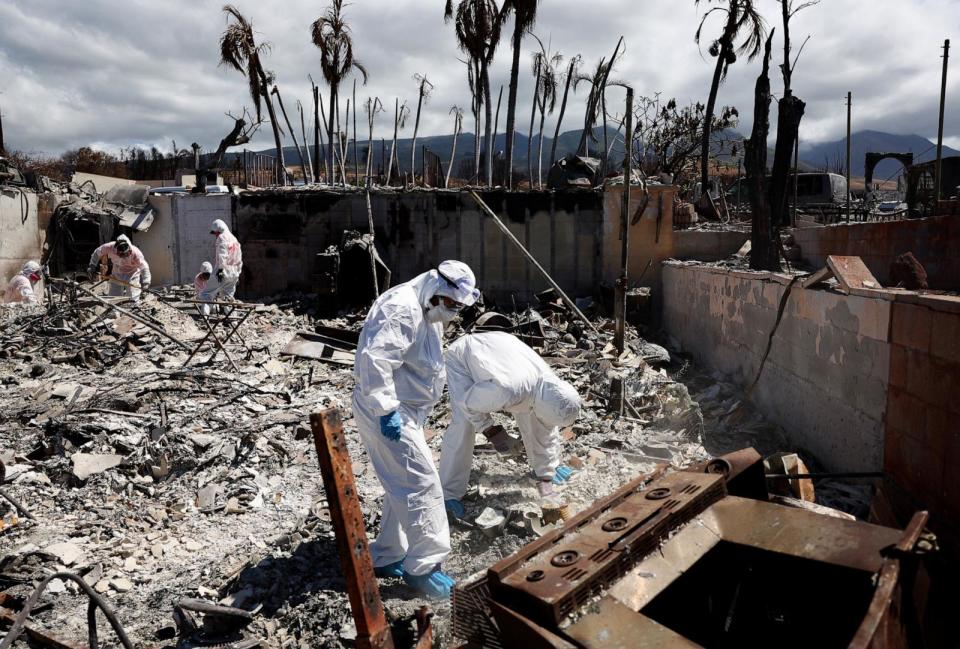
Residents native to the island blame capitalism for robbing Maui residents of both natural and monetary resources, as well-monied developers gained favor over families who had lived on the island for generations.
"Paying homage to our environment kind of slowly started to dissipate and disappear," Paele Kiakona, community leader and organizer for Lahaina Strong, an organization aimed at providing relief to and empower the native Hawaiian community in the aftermath of the wildfires, told ABC News. "So for generations now, our people have been fighting, obviously, for their land rights back, but more so to be able to sustain themselves."
MORE: Native Hawaiians fighting to take control of Maui's water rights amid wildfire cleanup
Plantations that engaged in monoculture, single-crop farming, and the practice of diverting streams to irrigate those crops, led to a much drier climate on the island, even decades after the plantations ceased operations, Rawlins-Fernandez said.
When the "perfect storm" of conditions led to the Maui wildfires in August 2023, the dry landscape ignited almost instantly, aided by high winds. More than 2,200 structures were damaged in the blaze, with 97 people declared dead, according to officials.
Climate change likely amplified the conditions that led to the deadly inferno, according to experts.
The wildfires' aftermath highlighted significant issues of cultural and economic inequity that had been brewing in Maui for decades, according to the Climate Justice Collaborative.
Displaced native Hawaiians and foreign-born residents both are being priced out of homes, a situation that worsened when West Maui reopened to tourists just two months after the wildfires, Kiakona said.
MORE: The emotional toll of clearing debris from the Maui wildfires 2 months later
Once Hawaii Gov. Josh Green reopened tourism in Maui on Oct. 8, there "really wasn't much incentive" for vacation rental owners to provide housing to residents, knowing they could make three to five times more money by renting to tourists, Rawlins-Fernandez said. At the time, 11,000 people needed housing, with Maui County and organizations like Lahaina Strong mobilizing to find solutions, she added.
The decades-long fight over water rights between Native Hawaiians and corporations continues on the island as well, and is now more heated than ever before, Kiakona said.
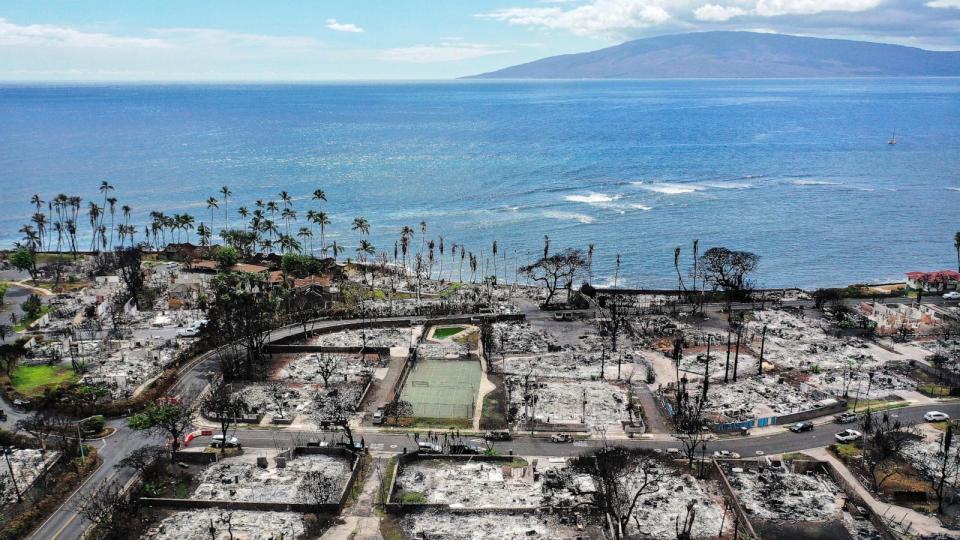
Native Hawaiians have long been aware that Maui's resources are finite, and protecting those rights and resources has been fundamental to the indigenous culture for generations. That call is encapsulated in the Hawaiian phrase "Malama 'Aina," which means caring for and honoring the land, Kiakona said.
"Being on an island, we contribute the least amount of greenhouse gases to our planet, yet we bear the brunt of the burden," Kiakona said. "It's just unfortunate that we aren't given more precedents and our voices are not uplifted and heard, when the indigenous peoples know how to handle our place better than anybody else on the planet."
The Power of Us: Climate change has disproportionately impacted these vulnerable US communities, experts say originally appeared on abcnews.go.com

